
A little over a week ago, while standing on the back porch, I noticed a mourning dove as it flew by me with a branch in it's mouth. I could hear it land somewhere just above me, near the porch's roof. After it flew by me with a branch for a second time, I decided to take a look.
There it was. I saw a bunch of twigs sticking messily out over the gutter. Where the roof of the porch meets the roof of the garage, there is a little wedge-shaped area. Two doves were making a nest there. Here is another angle...
What a brilliant location for a nest. It's protected by the house from the north and the west, keeping it safe from any major winds. It's also well protected from potential predators who might be interested in the nest. Rain shouldn't be an issue either. Just to the right of the nest, you can see the curve of the gutter run-off from the second story roof. The doves are safely behind it.
Since noticing the nest, I have seen a dove sitting in it non-stop. That means there must be eggs up there. Mourning doves lay two, white eggs for each brood.
Both parents take turns incubating the eggs, which takes about two weeks. I wonder if they always take the same shift. It feels like I keep seeing the same one during the day.
Not only do both parents incubate the eggs, but they both feed the young, too. The meal is a substance known as pigeon milk. Sounds delicious.
The young doves will leave the nest after about 15 days. They then hang around close to the nest for the next 1-2 weeks, waiting to be fed some more.
Once doves mate, they stay together for the whole season. In warmer areas, one pair can raise as many as 5-6 broods.
Doves need very sturdy places to build their nests on because they tend to be very flimsy. During construction, the male brings the materials and the female builds the nest.

A day or two after discovering the dove's nest, I noticed European starlings had already made a nest not too far away. Approximately 15 feet away, they made their home near the top of an arborvitae. And the nest was already filled with nestlings.
Like the doves, both starling parents feed their young. I watched as the two kept flying in and out of the shrub. Every time one went in, I could hear the babies crying for food.
Starlings typically lay 4-6 eggs and incubation takes about 12 days. The young won't leave the nest until about 21 days after hatching. Here, I captured one of the parents delivering food to the nestlings...
As I previously mentioned, the young don't typically leave the nest for about 21 days. I hadn't expected to see any young for, at least, another week. So, I was rather surprised to find a young starling sitting in the grass just by my porch this morning.
The young bird didn't appear to be in distress. The parents seemed to get agitated when I got too close for their liking. You can still see the last remnants of fur on the youngling. I watched it for a few minutes. It was hopping through the grass just fine. Each time it hopped, it would try to stretch it's wings out. It didn't seem like it was able to fly.
I ran inside my house and sat down at my computer. I hadn't done any of my research for this post, yet. I didn't know the young weren't supposed to leave the nest for 21 days. I was worried about this little bird.
The research was done quickly. It only took about five minutes to find. However, when I went back outside, the young starling was nowhere to be seen. I really hope it made it to a safe place. I plan on doing a more thorough search when I go outside to replace the suet cakes in the feeders.
Hopefully, you're in a safe place my little friend.

Sources
1) Mourning Doves
2) European Starlings

Wherever we are, we are surrounded by nature. It's always trying to communicate with us. Take time to notice. #NoticeNature.
All gifs and images are my own unless otherwise stated.


Join the family...




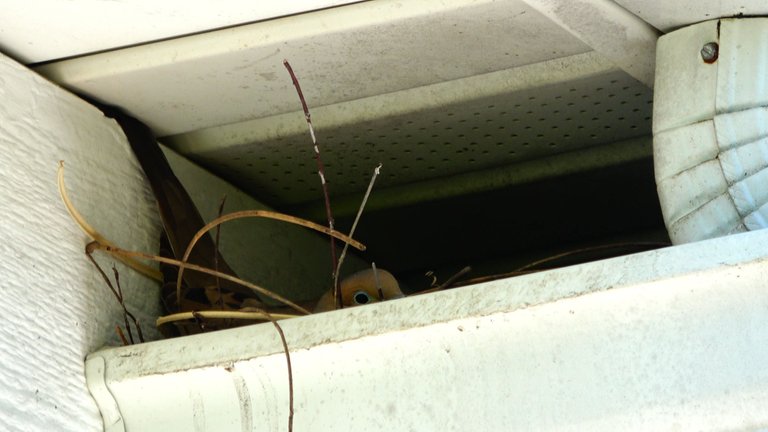
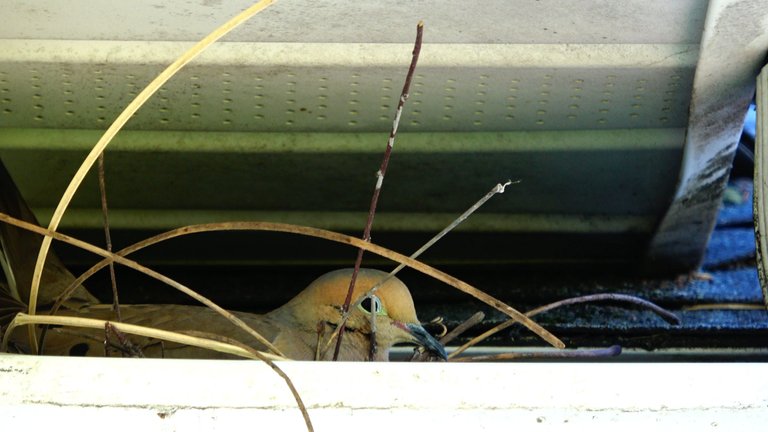
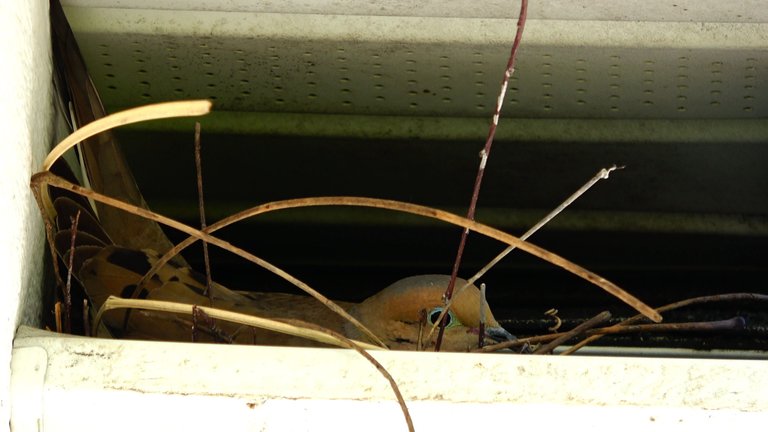
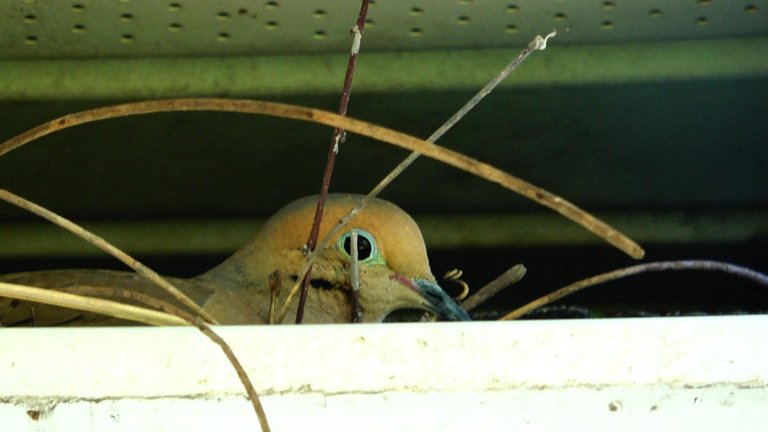
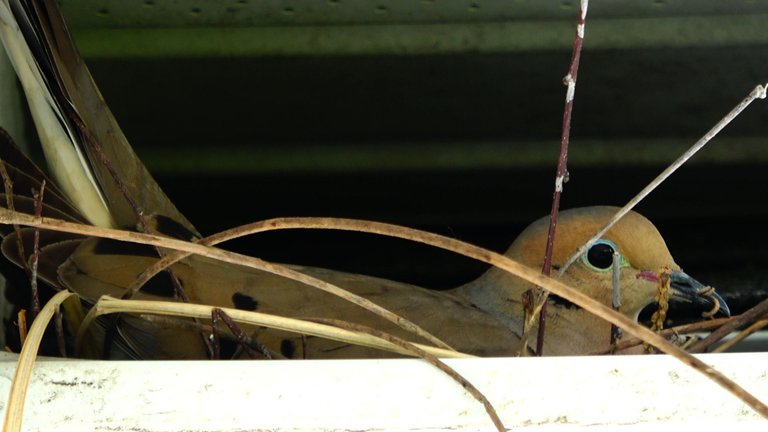
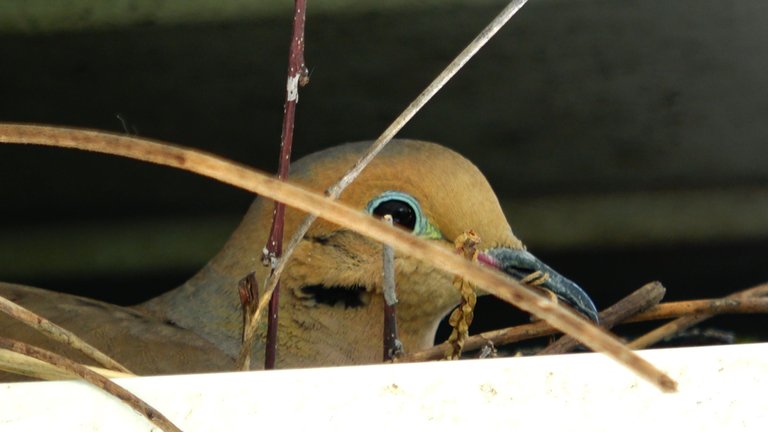
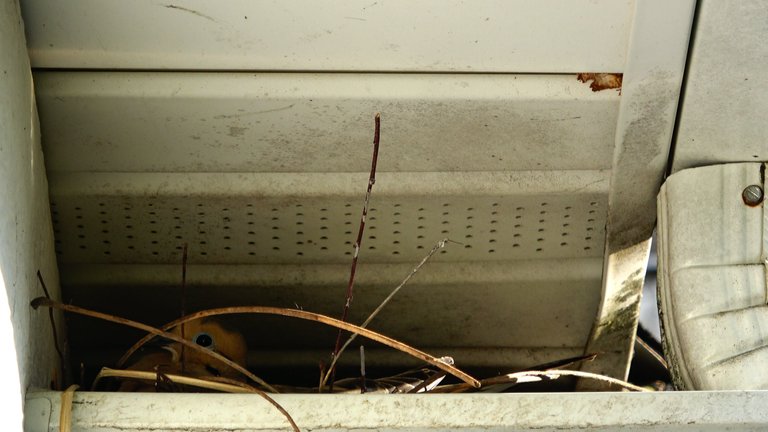
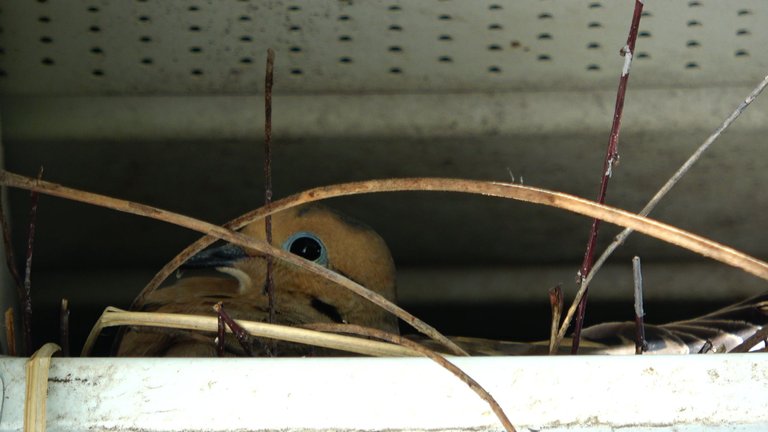

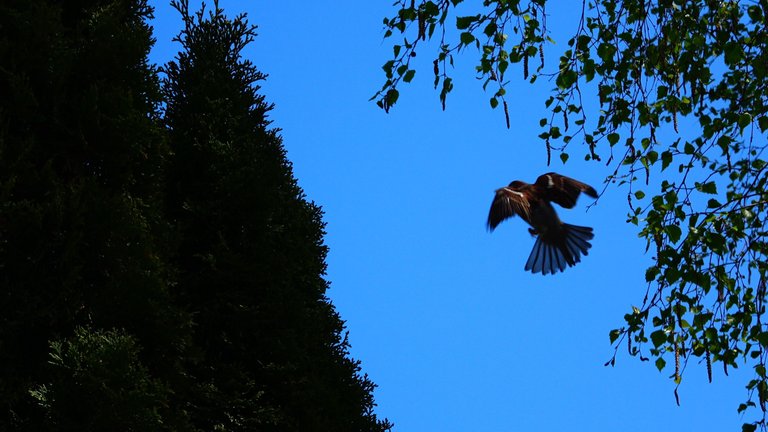
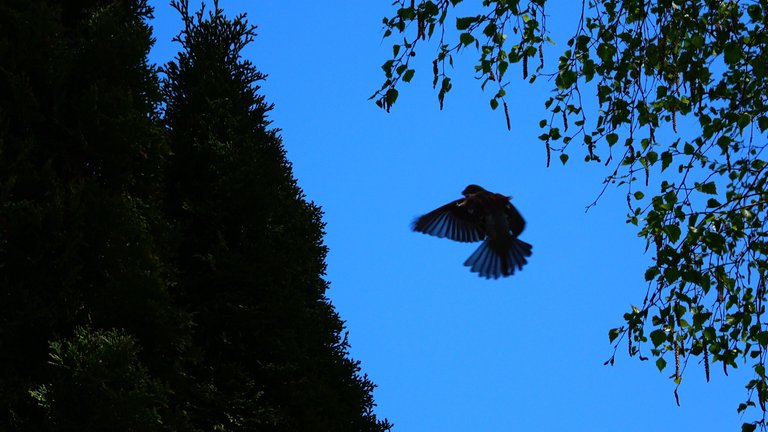
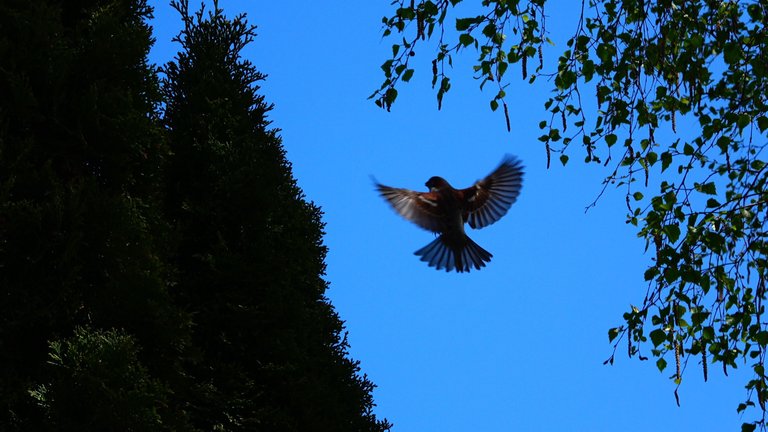
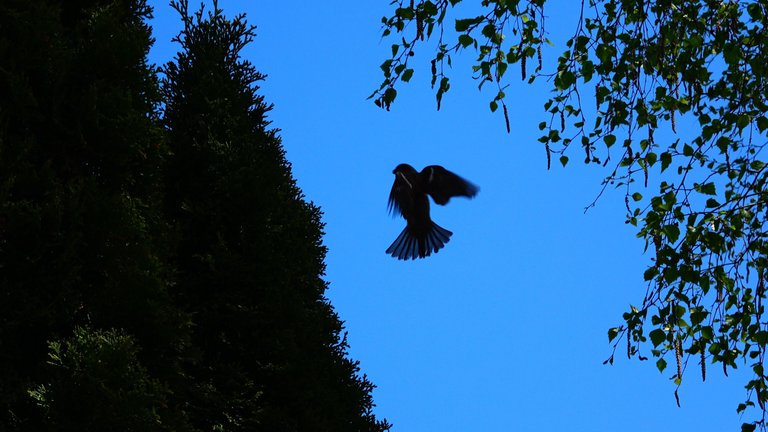

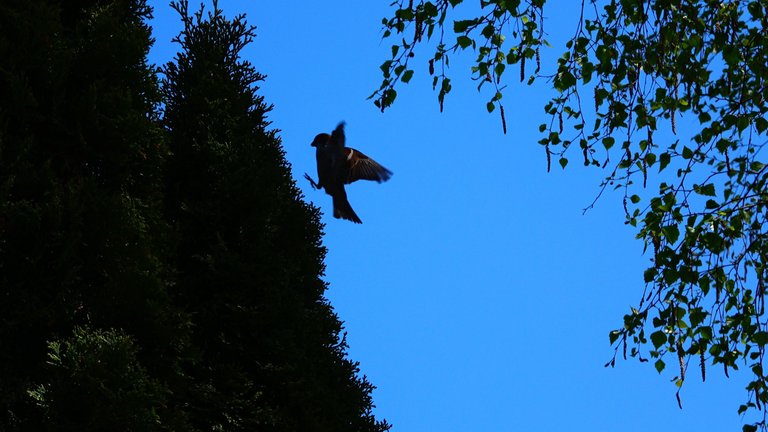
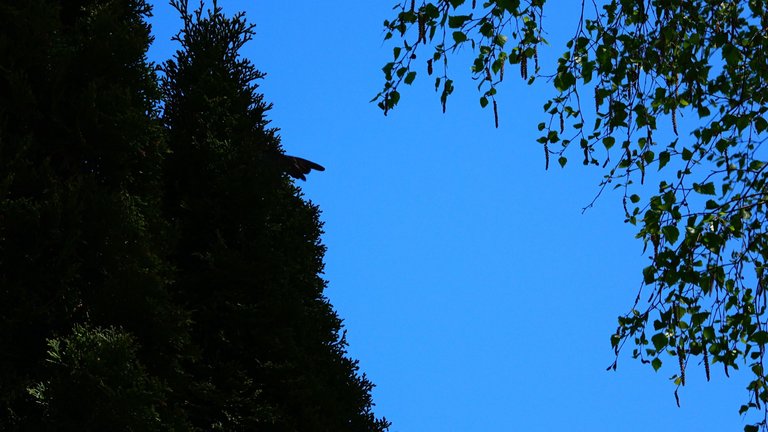

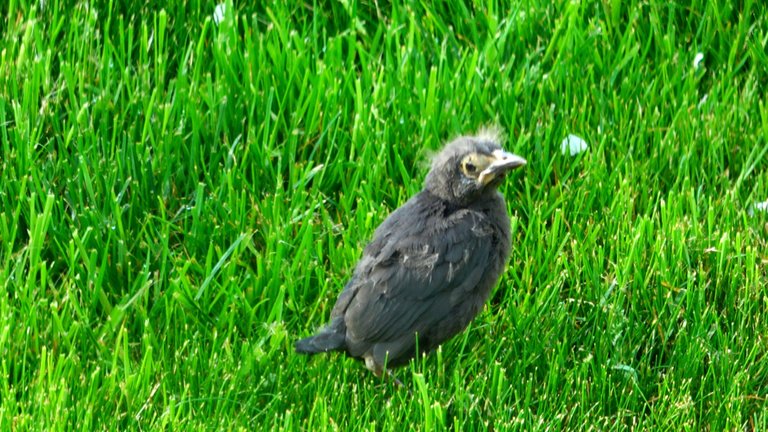
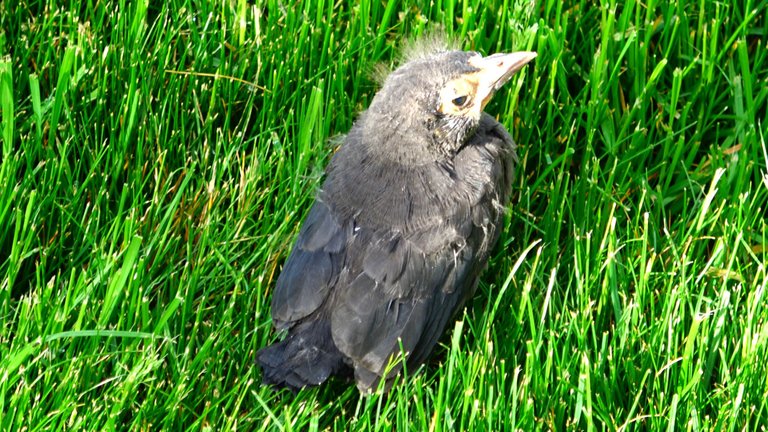
What an amazing location for a nest! Thanks for sharing Omra!
Thanks for the comment Bruce! Hope you have a great weekend!
Those doves have a great realtor. 😁
Hoping that the little starling is safe as well and that you'll have the chance to see it visiting your feeder. 💜
Reminds me of the milk Charlie and Mac made on It's Always Sunny. 🤣
Dear @omra-sky, we need your help!
The Hivebuzz proposal already got important support from the community. However, it lost its funding a few days ago and only needs a few more HP to get funded again.
May we ask you to support it so our team can continue its work this year?
You can do it on Peakd, ecency,
https://peakd.com/me/proposals/199
Your support would be really helpful and you could make a difference.
Thank you!